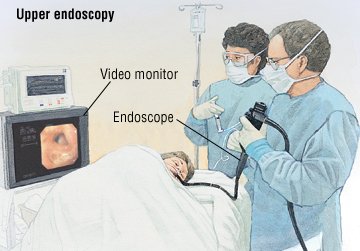

With the widespread vaccination of HCPs and the general population, stringent screening measures that were required prior to elective endoscopy will likely be relaxed similar to the current pandemic. A trend to move from laboratory-based tests to point-of-care tests will also likely be present, thus allowing for the development of decentralized, rapid, sensitive, and low-cost diagnostics which can be widely implemented as screening tests. In the future, if another pandemic arises, universal testing for the detection of this hypothetical pathogen will likely be implemented. Regardless of the infectious agent, routine screening of patients for FTOCC (fever, travel history, occupational history, clustering history, and contact history) will likely be here to stay as a simple and easily implementable safeguard to protect other patients and HCPs. In the future even after the COVID pandemic has settled, these infection-minimized pathways may still have a role to reduce the risk of nosocomial outbreaks and provide better protection to patients at high risk of acquiring infections. A study of more than 6200 patients by the SCOTS project group from the UK showed that providing such a COVID-minimized environment can offer a clear road map for performing safe endoscopy during the recovery phase of the pandemic. have suggested separating hospitals into “hot” and “cold” aka COVID-minimized sites to stratify the risk of endoscopy to patients, taking into consideration individual patient risks such as those with cancer, on immunosuppression etc. Pre-endoscopy Infection-Minimized Pathways In this review, we provide a summary of the literature and some of our insights on the future of endoscopy in the post-COVID era (Table 1). It is evident that some of the changes adopted will likely be staying with us in perpetuity. Regardless of when this pandemic will really end, it is evident that COVID has profoundly impacted healthcare systems worldwide, including the delivery of endoscopy services. Hopefully, with efforts to strengthen containment and to further increase the vaccination uptake rates, even in younger individuals and children, the pandemic can be controlled to a certain degree. The rapid development of vaccines and the widespread implementation of vaccination programs worldwide was originally seen as a game changer, but this has led to the surges of highly infectious COVID variants.
Endoscopy after effects how to#
As the pandemic waxed and waned, many authorities issued guidance on how to safely and effectively restart routine clinical services. Thankfully, with widespread implementation of these measures, no large nosocomial outbreak of the virus has been reported so far.

After the initial phase, many centers resumed limited endoscopy services with the implementation of stringent infection prevention and control (IPC) policies such as universal masking for patients, pre-endoscopy symptoms screening and COVID testing, and using high-level personal protective equipment for upper endoscopies as they are potentially aerosol-generating. Initially, many parts of the world had to stop elective endoscopies due to the risk of potential infections, lack of personal protective equipment (PPE), and redeployment of healthcare professionals (HCPs) to COVID-related patient services. The COVID (coronavirus disease) pandemic is still ravaging in many parts of the world and has led to an unprecedented impact on healthcare systems globally. Future research focusing on better risk stratification of patients who need endoscopy, validating novel endoscopy training models, and adopting new technologies are urgently needed to support these changes in the post-pandemic world. This pandemic has led to tangible differences in how we provide endoscopy service in the future. Adoption of new technologies such as non-endoscopy alternatives and telehealth may be a viable alternative to minimize infection risks. Proper handling of delayed or cancelled procedures is of utmost importance to minimize delays in diagnosis and treatment of diseases such as cancer. Endoscopy training and education has been profoundly affected though novel training models to overcome this have been developed. This paper reviews the latest literature regarding the impact of COVID on endoscopy service provision.Įndoscopy has been shown to be largely safe when appropriate infection prevention and control measures are in place.


 0 kommentar(er)
0 kommentar(er)
